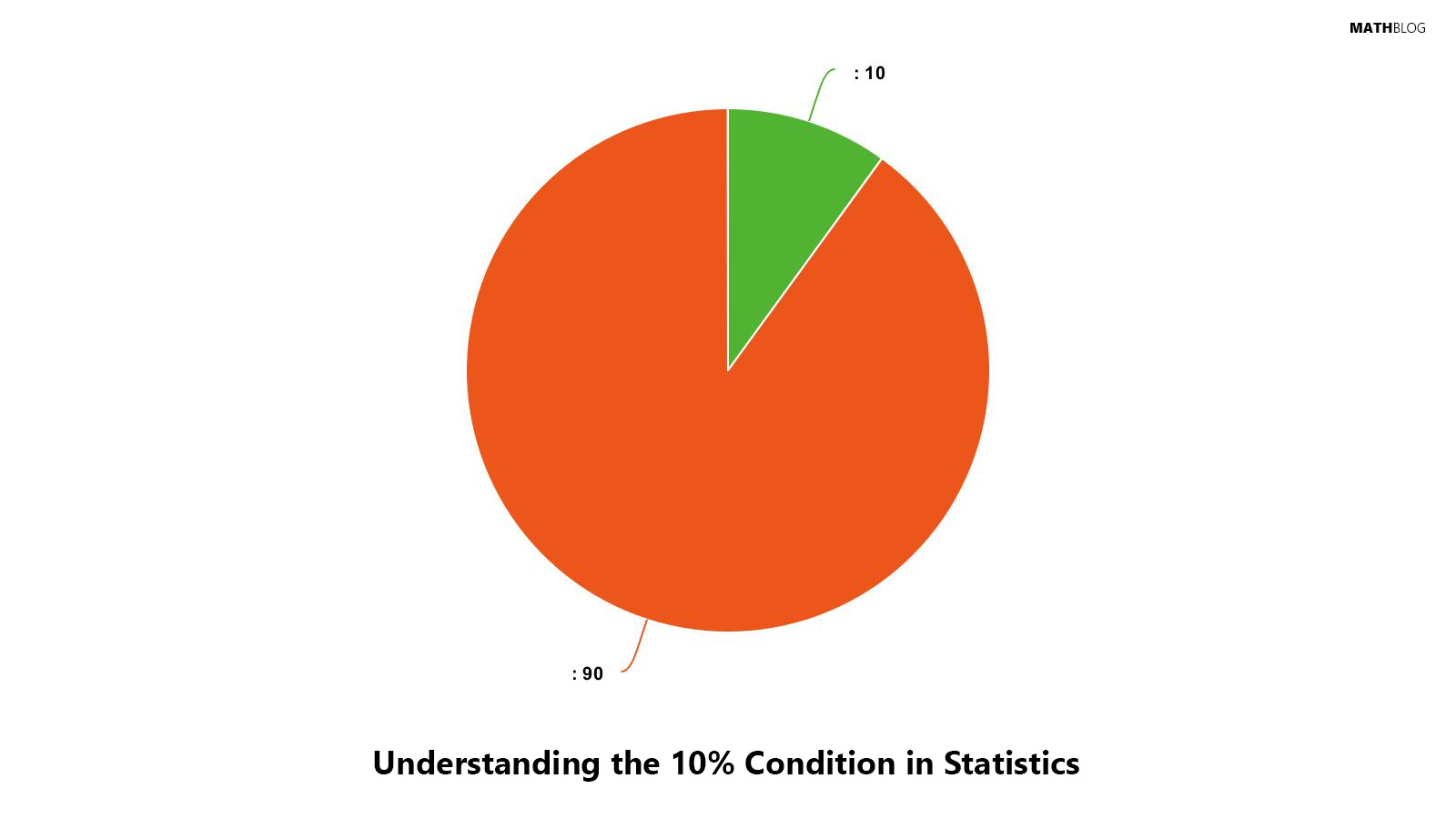The 10% condition in statistics stipulates that when sampling without replacement, the sample size should not be more than 10% of the population. This rule helps prevent bias in statistical results, especially in studies where sampling plays a crucial role.
In discussions around statistical means, the 10% condition plays a less prominent role due to generally smaller sample sizes. However, its importance escalates in cases involving very small populations, where the sample size can constitute a significant portion of the total population, potentially leading to biased results.
Where is the 10% Condition Applied?
The application of the 10% condition is not universal but is particularly pertinent in certain statistical procedures. Understanding where and how it applies is key to its effective implementation.
Standard Scenarios
The condition is most relevant in situations like sampling within the framework of the Central Limit Theorem, where it helps maintain the independence of sample data. It’s also crucial when comparing proportions from different groups to avoid over-representation, and while analyzing differences of means in small populations or large samples, where the risk of sample bias is high. In Bernoulli trials and Student’s t-tests, this rule ensures the randomness and independence of each trial or sample.
Exclusions in Application
However, the condition is not applicable in some instances. For example, in Chi-square tests, where the focus is more on categorical data rather than sample size proportions, or in randomized experiments where the method of selection negates the need for this condition. Similarly, in cases of differences of means, except under specific conditions, the 10% rule is not a primary concern.
10% vs. 5% Condition
Debate exists within the statistical community about whether a stricter 5% condition might be more appropriate in certain scenarios, particularly in modeling using the standard normal distribution. This debate underscores the ongoing evolution and refinement within statistical methodologies.
Bernoulli Trials and the 10% Condition
For Bernoulli trials, the 10% condition is crucial. These trials, which often involve binary choices (like yes/no surveys), require independence in each trial. Here, the 10% condition helps maintain the integrity of the trial by ensuring that each selection is an independent event, not influenced by previous choices.
Practical Illustration of the 10% Condition
Before exploring the consequences of disregarding the 10% condition, let’s consider a practical example to understand its importance:
Imagine a small town with a population of 1,000 residents. A researcher decides to conduct a survey about a local issue. According to the 10% condition, the sample size for this survey should not exceed 100 residents (10% of 1,000).
Suppose the researcher ignores this rule and samples 300 residents instead. This large sample size relative to the population could lead to over-representation of certain opinions or traits present in the town. For instance, if a particular viewpoint is slightly more common among the first few hundred people, sampling such a large portion of the town might exaggerate this viewpoint’s prevalence. As a result, the survey findings might not accurately reflect the true distribution of opinions among all town residents.
| Scenario | Population Size | Sample Size | Percent of Population Sampled | Potential Outcome |
|---|---|---|---|---|
| Compliant with 10% Condition | 1,000 | 100 | 10% | Less likely to have over-representation; more likely to reflect true distribution of opinions. |
| Non-compliant with 10% Condition | 1,000 | 300 | 30% | Increased risk of over-representation; might not accurately reflect true distribution of opinions. |
This example highlights why adhering to the 10% condition is crucial in obtaining representative and unbiased results in statistical sampling, especially in small populations.
Impact of Ignoring the 10% Condition
Neglecting the 10% condition can result in significant statistical errors. Overrepresentation in a sample can skew the analysis, leading to biased conclusions and undermining the validity of the research findings.
Examining specific case studies where ignoring the 10% condition led to flawed conclusions can highlight the practical importance of this rule. These examples serve as cautionary tales, emphasizing the need for adherence to this condition in statistical sampling.
Advanced Perspectives
Veteran statisticians delve into the subtleties of the 10% condition, offering insights into when and how it should be applied. Their perspectives shed light on the nuances of this rule and its relevance in various statistical contexts.
The statistical community continues to engage in debates over the application of the 10% condition. These discussions revolve around its flexibility, the necessity of a rigid application, and the context-specific nature of statistical sampling, reflecting the dynamic nature of statistical methodologies.
